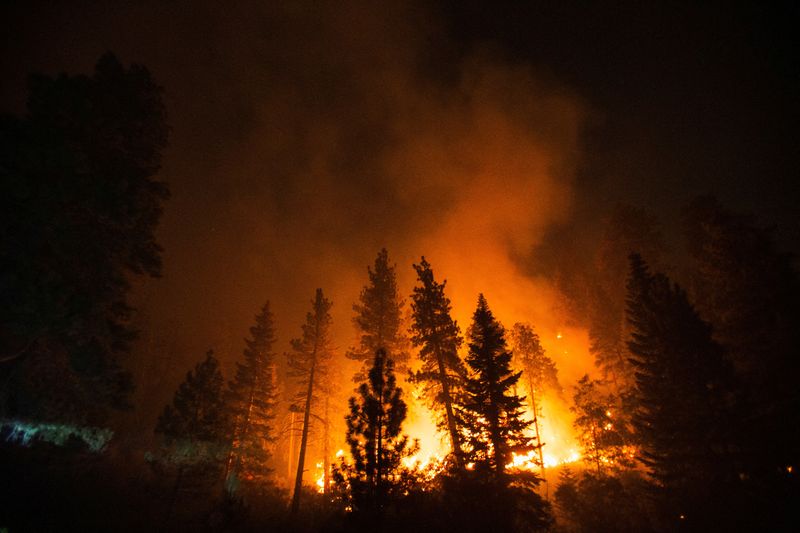Los Angeles wildfires slow, still threaten suburbs
2024.09.12 17:28
By Andrew Hay
(Reuters) – Wildfires that have burned dozens of mountain homes near Los Angeles slowed on Thursday but still threatened city suburbs.
Driven by triple-digit heat, gusting winds and tinder-dry vegetation, the three fires have burned at speeds firefighters have never witnessed, scorching over 110,000 acres (44,510 hectares) – an area twice the size of Seattle.
The Bridge Fire, California’s largest current wildfire, swept through communities in the San Gabriel Mountains less than 40 miles (65 km) northeast of central Los Angeles, where people priced out of the city have built homes.
The 51,000-acre (20,640-hectare) blaze destroyed over 40 houses and cabins in Mount Baldy and Wrightwood as well as damaging lifts at the Mountain High ski area, authorities said.
“We’re really expecting to make some great progress on this fire today due to the coastal marine influence, the lowering of temperatures,” said Lisa Cox, a spokeswoman for the response team, referring to a process that raises moisture levels.
In San Bernardino, 50 miles (80 km) east of Los Angeles, Justin Wayne Halstenberg, a 34-year-old delivery driver, was charged with arson and great bodily injury on Thursday for allegedly starting the Line Fire, which has scorched 37,000 acres (14,970 hectares) of mountains overlooking the city of 220,000.
Halstenberg was being held at a local jail and was not immediately available for comment. No attorney was listed for him.
The Line Fire destroyed a home in Running Springs and injured a firefighter and two civilians. Some 5,490 homes were evacuated due to the blaze and two men were arrested for suspected intent to loot.
Southeast of Los Angeles, the Airport Fire has destroyed homes in the Elsinore Mountains and injured at least 10 people.
The 23,000-acre (9,300-hectare) blaze is believed to have been caused by a spark from machinery moving boulders to block access to the wilderness area.
“The Airport Fire remains a significant threat to Orange County and Riverside County communities,” emergency agencies said in a statement.
The blazes have California scrambling for extra firefighting resources as a record-setting U.S. fire season creates a nationwide shortage of personnel and aircraft.

Scientists say climate change is stoking larger and more severe wildfires in the U.S. West. California’s mountains are primed for fire after grasses and scrub thrived in the past two years’ wet winters then dried out in recent high temperatures.
“We are seeing fires that are getting larger and burning more acres than we used to see,” said Robert Foxworthy, a spokesman for the California Department of Forestry and Fire Protection or CAL FIRE, with over 20 years experience as a firefighter.








